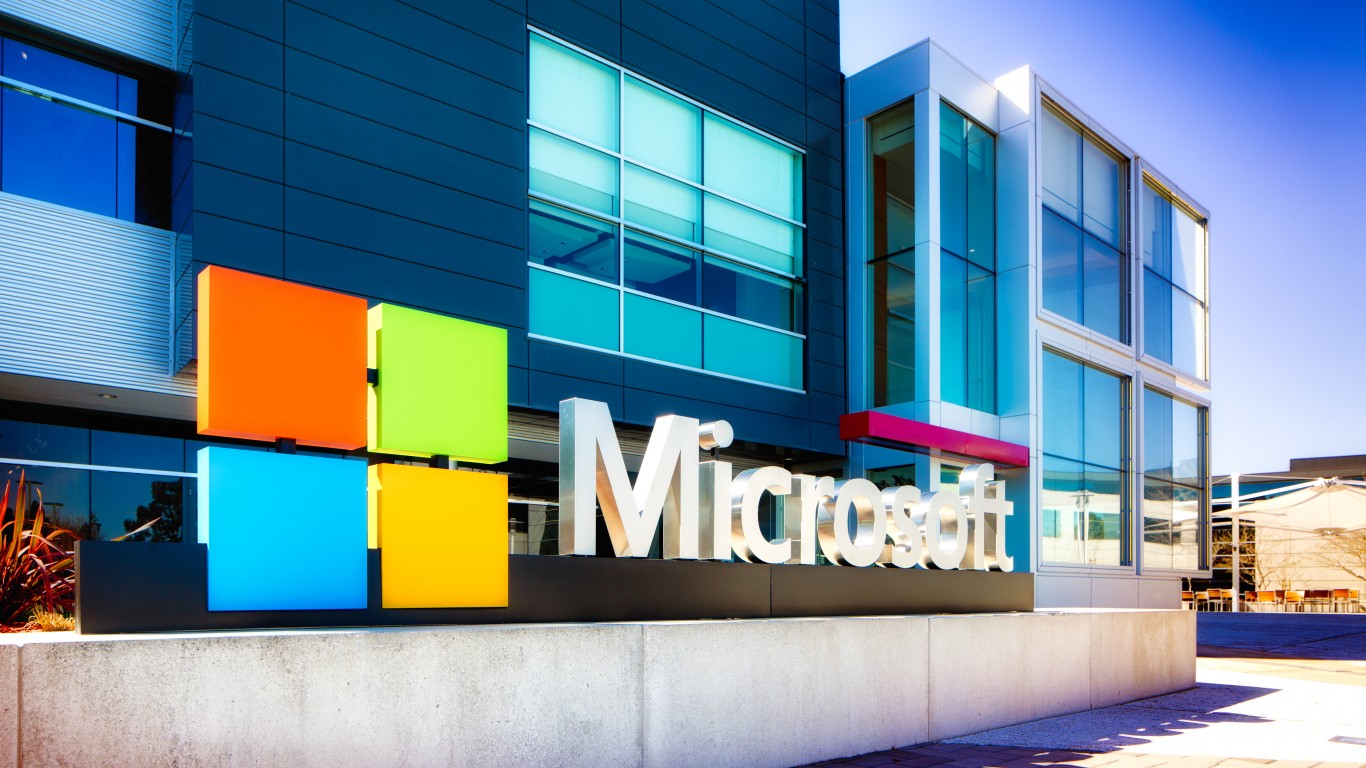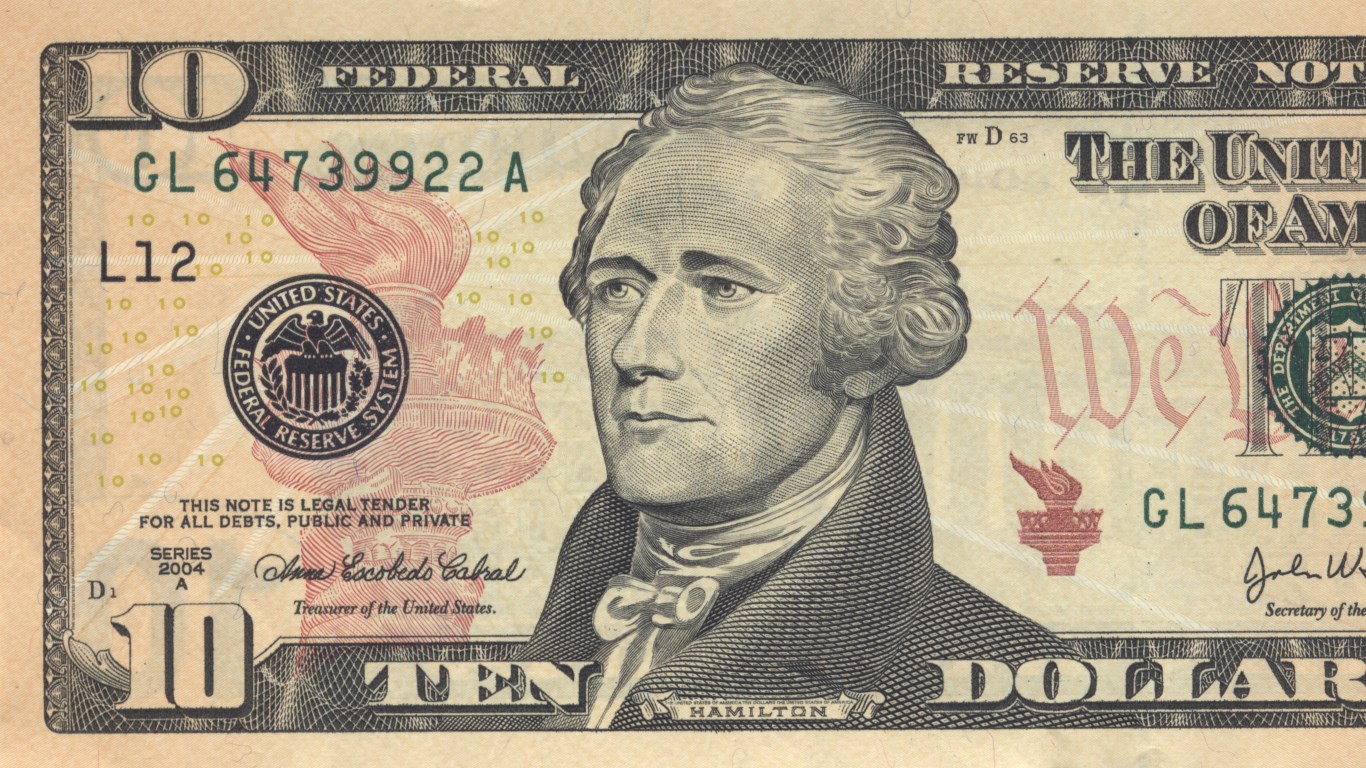
No notable earnings reports were released late Friday or early Monday morning.
After U.S. markets close on Monday, Cadence Systems, Cleveland-Cliffs and NXP Semiconductor will release their quarterly earnings reports.
General Motors, NextEra Energy and Verizon are on deck to release their latest results first thing Tuesday morning.
Here is a look at three companies set to report quarterly results after markets close Tuesday afternoon.
Alphabet
The parent of Google, Alphabet Inc. (NASDAQ: GOOGL), is the first (alphabetically speaking) of the five big tech stocks to report June-quarter earnings. The good news for investors is that the stock has added 36% to its share price so far in 2023, with about two-thirds of that increase coming by mid-April.
In the first quarter, Alphabet beat both revenue and earnings per share (EPS) estimates, largely due to the company’s massive reduction in employees. What did it have to do to keep up the momentum in the second quarter? Sell more advertising on its Google search results pages. Wall Street seems to think that happened.
Of 51 analyst ratings on the stock, 43 are Buy or Strong Buy rating, and the rest are Hold ratings. At a recent price of around $120 a share, the upside potential, based on a median price target of $126, is 11.8%. At the high price target of $172, the upside potential is 68.6%.
Second-quarter revenue is forecast at $72.75 billion, which would be up 4.2% sequentially and by 4.4% year over year. Adjusted EPS are pegged at $1.34, up 14.7% sequentially and 10.7% higher year over year. For the full 2023 fiscal year, consensus estimates call for EPS of $5.35, up 17.4%, on revenue of $300.11 billion, up 6.1%.
Alphabet stock trades at 22.5 times expected 2023 EPS, 19.0 times estimated 2024 earnings of $6.32 and 16.3 times estimated 2025 earnings of $7.37 per share. Its 52-week trading range is $83.34 to $129.04. The company does not pay a dividend, and the total shareholder return for the past 12 months was 4.97%.
Microsoft
Over the past 12 months, Microsoft Corp. (NASDAQ: MSFT) has added 29.8% to its share price, including a gain of 43.4% so far in 2023. And while shares got a boost with the March launch of OpenAI’s ChatGPT, the share price increase has followed a trend line that began in January.
The recent pricing announcement for Microsoft’s CoPilot AI software gave the shares another jolt, but all the hype about AI is not expected to add much to either the top or bottom line. Microsoft’s fortunes remain tethered to Azure. That is unlikely to change in the second half of the calendar year (the first half of the company’s 2024 fiscal year).
Sentiment for Microsoft stock is virtually all positive. Of 51 analysts covering it, 43 have a Buy or Strong Buy rating, and seven more rate it at Hold. At a share price of around $344, the potential upside based on a median price target of $385 is about 11.9%. At the high target of $450, the implied gain is 30.8%.
For its fourth quarter of fiscal 2023, revenue at the Dow Jones industrial average component is forecast at $55.48 billion, up 5% sequentially and by 7.0% year over year. Adjusted EPS are forecast at $2.55, up 4% sequentially and 14.3% higher year over year. For the full fiscal year that ended in June, consensus estimates call for EPS of $9.63, up 4.6%, on revenue of $11.2 billion, up 6.5%.
Microsoft stock trades at 35.7 times expected 2023 EPS, 31.2 times estimated 2024 earnings of $11.02 and 27.2 times estimated 2025 earnings of $12.62 per share. The 52-week range is $213.43 to $366.78. Microsoft pays an annual dividend of $2.72 (yield of 0.78%). Total shareholder return over the past year was 31.06%.
Visa
The second Dow component reporting late Tuesday is credit card issuer Visa Inc. (NYSE: V). Over the past 12 months, the stock price has risen by 10.7%, including a boost of 15.2% so far in 2023.
Visa has beaten Wall Street earnings and revenue estimates for 12 consecutive quarters, and there is every reason to think that streak will continue. High interest rates and increased consumer spending remain as principal drivers of the company’s results. Free cash flow is worth keeping an eye on. It fell by about a quarter in the second quarter of last year and has been slowing since the fourth quarter of 2022.
Analysts are solidly bullish, with 32 of 38 brokerages rating the shares a Buy or Strong Buy. Another five have Hold ratings. At a share price of around $239, the implied gain based on a median price target of $268 is about 12.1%. At the high price target of $338, the upside potential is 41.4%.
For Visa’s third quarter of fiscal 2023, revenue is forecast at $8.06 billion, up 1.0% sequentially and 10.7% higher year over year. Adjusted EPS are forecast at $2.12, up 1.3% sequentially and by 7.1% year over year. For the full fiscal year ending in September, consensus estimates call for EPS of $8.59, up 14.5%, on revenue of $32.56 billion, up 11.1%.
Visa stock trades at 27.8 times expected 2023 EPS, 24.5 times estimated 2024 earnings of $9.76 and 21.2 times estimated 2025 earnings of $11.75 per share. The 52-week range is $174.60 to $245.37. Visa pays an annual dividend of $1.80 (yield of 0.75%). Total shareholder return for the past 12 months was 11.55%.
Thank you for reading! Have some feedback for us?
Contact the 24/7 Wall St. editorial team.

 24/7 Wall St.
24/7 Wall St.



